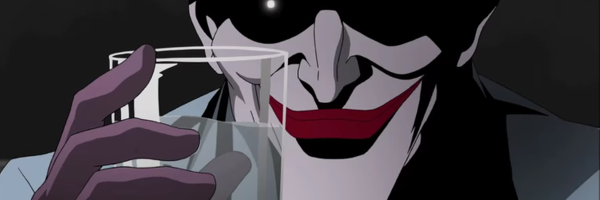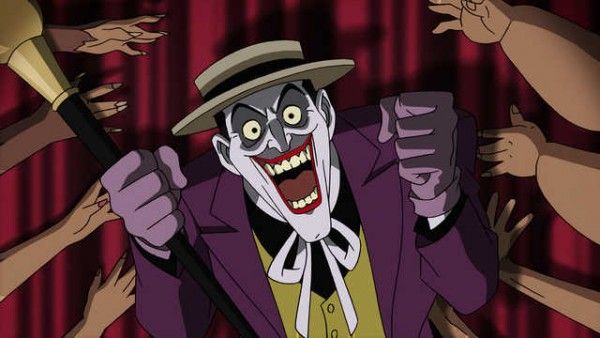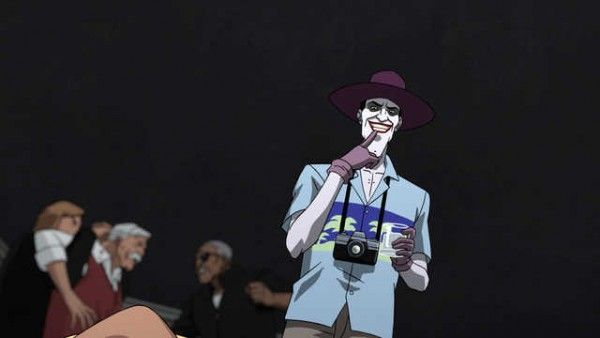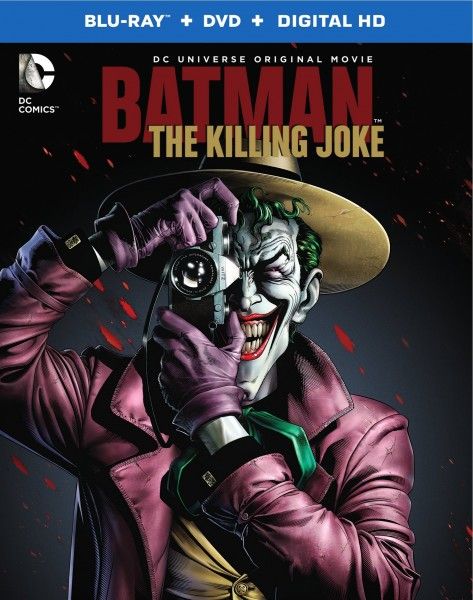The R-rated animated adaptation Batman: The Killing Joke has been building anticipation for months, all leading up to its Comic-Con premiere this weekend. While the main portion of the adaptation that brought Alan Moore and Brian Bolland's story to life was well-received by fans, a good number of reviewers took issue with the Batgirl/Barbara Gordon-centric prequel and the sexual nature of her story. (Be sure to read our own review of the panel and the film itself by Tommy Cook here.)
In a chat with Vulture, executive producer Bruce Timm, who's long been a major part of the DC Comics animated universe, responded to a number of questions about the more controversial aspects of Batman: The Killing Joke. We've culled some of Timm's most revealing answers to the burning questions from Bat-fans. Spoilers follow, so if you'd rather not know anything more about The Killing Joke, it's best to avoid reading any further.
Image via Warner Bros.[/caption]
It came from a three-way conversation between [co-producer] Alan Burnett, [screenwriter] Brian Azzarello, and myself. I don't remember who initially came up with the idea, but we all kind of jumped on it all at the same time and said, Yeah, that's kind of where we need to go.
We were aware that it's a little risky. There's definitely some stuff in that first part of the movie that's going to be controversial. Here's where we came down on that specific issue: It was really important to us to show that both of the characters make some pretty big mistakes. I mean, his “parental skills” aren't that great. Maybe never having had any kids of his own, he doesn't realize that if you tell a kid to not do something, they’re going to want to do it even more. And then she makes some mistakes and then he kind of overreacts to her mistakes and then she overreacts to his overreaction. So it's very human; it's a very understandable story. It's tricky because it's messy, because relationships are sometimes messy. But to me and to Alan and Brian, it was all very fascinating to us to explore that angle.
Joker's sex life - and visits with call girls - was introduced in this adaptation, which was odd enough to begin with, but a comment about the Joker not visiting a prostitute after his latest escape led some to surmise it's because he actually rapes Barbara Gordon during his assault. Tim responds:
I don't think that, actually. I did not think of it as supporting that. If I had, I probably would have changed the line. I never, ever thought that he actually raped her. Even in my first read of the comic, I never thought that. It just seemed like he shot her and then took her clothes off and took pictures of her to freak out her dad. I never thought that it was anything more than that.
Here's the thing: Whether he [raped her] or not, it's still sexual violence. It's still a horrible thing. So in my own head, I was already self-censoring the moment. Maybe just to make it a little more easier to get through. But it’s still a very horrible, horrible thing.
Image via Warner Bros.[/caption]
On the decision of whether or not to change the depiction of Barbara Gordon in the story:
Even back when I first read it, I was very aware that Barbara was basically there just to be maimed and set Batman off on his quest to find the Joker and save Commissioner Gordon. This was years before the term women in refrigerators was coined, but it's the classic woman-in-the-refrigerator situation, where the female in the story is basically only used as a plot device for the male protagonist.
So we thought, If we're going to add a whole bunch of new story, let's make it all about Barbara. We decided that it should be dealing with Barbara as Batgirl, so we can spend more time with her and kind of understand where she comes from. It let us spotlight the areas where she's a good crime-fighting partner for Batman, and some other areas where she's not quite a good fit because she comes at crime fighting from a completely different place than him.
One of the major gripes from reviewers so far, other than the controversial handling of the Barbara Gordon material, was the stark divide between the prequel and main story. That was apparently by design:
It really is two different stories with a break in the middle. We just decided that would be the best way to go with it. I honestly don’t even think of them as being one story. As weird as that may be. We just didn’t go down that route.
In retrospect, Timm still considers the sexual assault in Batman: The Killing Joke as being necessary to the adaptation:
I've always been ambivalent about this particular story. It's not my favorite Alan Moore comic, especially compared to the other things he was doing back then, like Miracleman, V for Vendetta, Watchmen, Swamp Thing. It has always disturbed me and I made a real concrete effort going into this project: I’m not going to try to put my own "spin" on it. I’m not going to make it a Bruce Timm movie. Warts and all, the story is what it is. It’s kind of a classic. And as uncomfortable as some of this stuff is, it's not my story. I’m just the guy who’s putting it on the screen, so I didn’t want to change it and make it more palatable to my own sense of taste.
But I think it’s not as extreme as it could’ve been. We didn’t go out there waving a red flag like, Hey, we want an R rating! It’s horrible, but it’s relatively tastefully done, as was the comic. In this day and age, we clearly see way worse things. Even on prime-time TV, sometimes, on shows like Hannibal or even Gotham, in terms of explicit violence. We needed to stay true to the comic.
You can find out for yourself just how Batman: The Killing Joke plays out when it hits theaters on July 25th before coming to home video soon after. In the meantime, be sure to share your thoughts on the controversy in the comments below!




